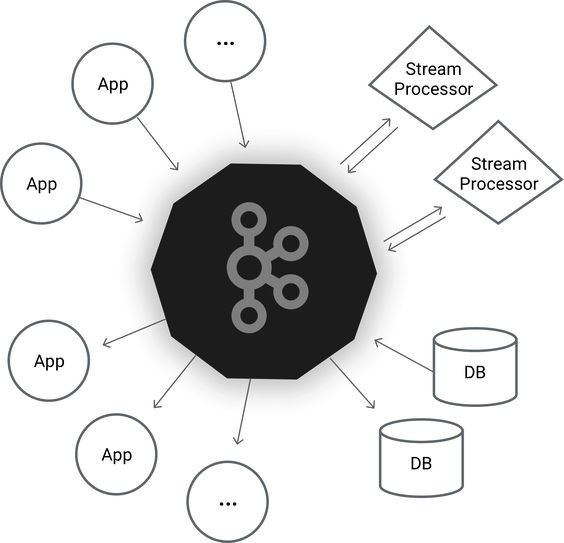In today’s fast-paced digital landscape, businesses are constantly seeking ways to improve their agility, scalability, and real-time data processing capabilities. Event-driven architecture (EDA) has emerged as a powerful solution to address these needs. By leveraging event-driven architecture, businesses can efficiently handle a large volume of events and enable seamless communication between various components of their systems. Apache Kafka, an open-source distributed event streaming platform, plays a vital role in implementing event-driven architecture. In this article, we will explore how businesses can benefit from event-driven architecture using Apache Kafka.
Introduction
Event-driven architecture enables businesses to build highly responsive, scalable, and efficient systems by focusing on events, which represent important occurrences or changes in a system. Apache Kafka, with its publish-subscribe model and distributed architecture, provides an ideal foundation for implementing event-driven architecture. Let’s explore the key benefits that businesses can gain by adopting event-driven architecture using Apache Kafka.
Understanding Event-Driven Architecture
Event-driven architecture is an architectural paradigm where systems communicate and respond to events. An event can be defined as a significant change or action that occurs within a system, such as a user registration, a purchase transaction, or a sensor reading. In event-driven architecture, events are the central entities, and various components of the system can react to these events asynchronously.
Real-Time Data Processing
One of the significant advantages of event-driven architecture is its ability to handle real-time data processing. Events are processed as they occur, enabling businesses to respond rapidly to critical events or triggers. This real-time processing capability is particularly valuable in scenarios such as fraud detection, real-time analytics, and monitoring applications where immediate actions need to be taken based on incoming data.
Scalability and Flexibility
Event-driven architecture offers excellent scalability and flexibility. With Apache Kafka, businesses can handle high volumes of events and distribute the load across multiple instances or clusters. This scalability allows systems to accommodate increasing event rates and handle large spikes in traffic without compromising performance. Additionally, event-driven architecture enables businesses to add or remove event consumers and producers easily, providing the flexibility to adapt to changing business needs.
Decoupling of Services
Event-driven architecture promotes loose coupling between different components or services within a system. Services can communicate with each other through events without direct dependencies, resulting in a more modular and maintainable architecture. This decoupling allows businesses to evolve and update individual services independently, without affecting the entire system. It also enables seamless integration with new services or third-party systems, making it easier to incorporate new functionalities or expand the system’s capabilities.
Streamlined Integration and Interoperability
Event-driven architecture facilitates integration and interoperability between different systems or microservices. By adopting a standard event format and utilizing Apache Kafka’s publish-subscribe model, businesses can establish a unified communication channel for data exchange. This enables seamless integration between internal and external systems, allowing businesses to leverage data from various sources and unlock new possibilities for collaboration and innovation.
Fault Tolerance and Resilience
Event-driven architecture, coupled with Apache Kafka’s distributed nature, offers built-in fault tolerance and resilience. Kafka’s replication and partitioning mechanisms ensure high availability and durability of events. In case of failures or system outages, events can be reliably stored and replayed, ensuring that no events are lost and the system can recover gracefully. This fault-tolerant approach enhances the overall reliability and robustness of the system.
Simplified System Maintenance
Event-driven architecture simplifies system maintenance and upgrades. Since services are decoupled and communicate through events, businesses can make changes or updates to individual services without affecting the entire system. This modular approach reduces the risk of system-wide failures during maintenance activities. Businesses can roll out new features, fix bugs, or perform updates in a controlled and incremental manner, minimizing downtime and disruptions to the system.
Event Sourcing and Auditability
Event-driven architecture supports event sourcing, which involves capturing and storing all changes as a sequence of events. This approach provides a comprehensive audit trail of actions and enables businesses to track the history and state of the system. Event sourcing enhances data integrity, enables regulatory compliance, and supports advanced analytics and reporting capabilities.
Use Cases for Event-Driven Architecture
Event-driven architecture using Apache Kafka finds application in various use cases across industries. Some common use cases include real-time analytics, IoT data processing, fraud detection, financial systems, inventory management, supply chain monitoring, and social media analytics. These use cases leverage the benefits of event-driven architecture to handle large volumes of events, process data in real time, and enable seamless integration and scalability.
Implementing Event-Driven Architecture with Apache Kafka
Implementing event-driven architecture with Apache Kafka involves designing an event-driven system, establishing event producers and consumers, defining event schemas, and configuring Kafka topics and partitions. It requires careful consideration of event modeling, system scalability, fault tolerance, and data governance. Working with experienced architects and Kafka experts can help businesses design and implement an effective event-driven architecture using Apache Kafka.
Challenges and Considerations
While event-driven architecture offers significant benefits, businesses should be aware of certain challenges and considerations. These include event ordering, event schema evolution, data governance, system monitoring, and the learning curve associated with adopting a new architectural paradigm. Proper planning, architectural design, and implementation strategies can help mitigate these challenges and ensure a successful adoption of event-driven architecture.
Conclusion
Event-driven architecture using Apache Kafka provides businesses with a powerful framework for building scalable, responsive, and flexible systems. By adopting event-driven architecture, businesses can efficiently handle a large volume of events, enable real-time data processing, and establish seamless integration between components and systems. Apache Kafka’s distributed event streaming platform serves as a reliable and scalable foundation for implementing event-driven architecture. Embracing this architectural paradigm can position businesses for success in the ever-evolving digital landscape.
FAQs
Answer: Event-driven architecture can benefit a wide range of businesses, particularly those that deal with real-time data processing, event-driven workflows, or distributed systems. Industries such as finance, e-commerce, IoT, logistics, and social media analytics can significantly benefit from adopting event-driven architecture.
Answer: While Apache Kafka is not the only option for implementing event-driven architecture, it is a popular choice due to its scalability, fault tolerance, and real-time data streaming capabilities. Apache Kafka provides a reliable and distributed event streaming platform that is well-suited for building event-driven architectures.
Answer: To get started with event-driven architecture using Apache Kafka, it is recommended to familiarize yourself with the concepts of event-driven architecture and Apache Kafka. Consider reading relevant documentation, exploring use cases, and engaging with Kafka experts or consultants who can guide you through the design and implementation process.
Answer: Yes, event-driven architecture can improve system performance by enabling real-time data processing, parallel event handling, and scalability. By processing events asynchronously and distributing the workload across multiple components, event-driven architecture can enhance the overall performance and responsiveness of a system.
Answer: Some best practices for implementing event-driven architecture include carefully designing event schemas, establishing clear event boundaries, using event-driven patterns such as event sourcing or CQRS (Command Query Responsibility Segregation), monitoring event flows and system health, and adopting a modular and decoupled architecture. It is also crucial to consider data governance, security, and scalability aspects during the implementation process.




Leave a Reply